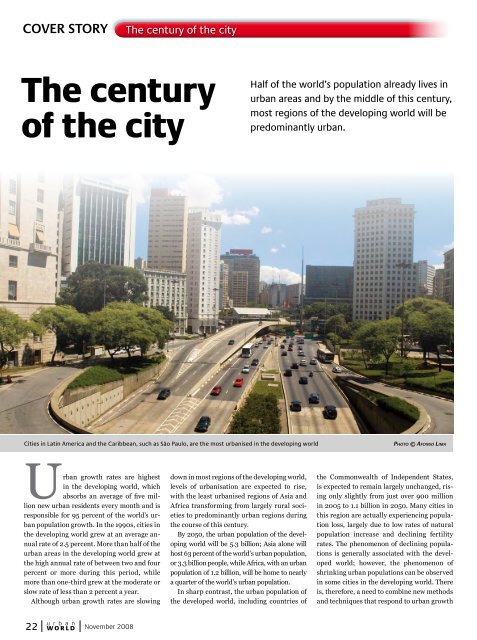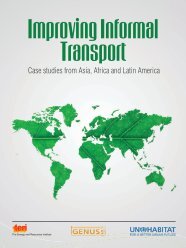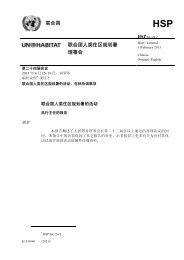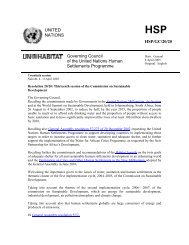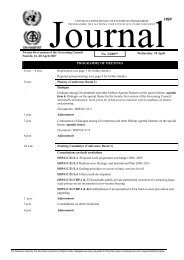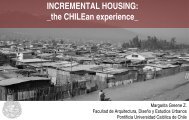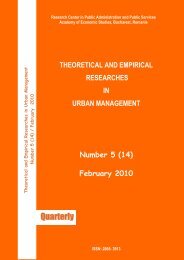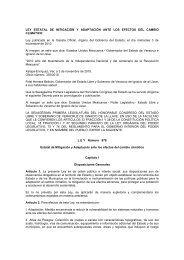Harmonious cities - UN-Habitat
Harmonious cities - UN-Habitat
Harmonious cities - UN-Habitat
You also want an ePaper? Increase the reach of your titles
YUMPU automatically turns print PDFs into web optimized ePapers that Google loves.
COVER STORY The century of the city<br />
The century<br />
of the city<br />
Urban growth rates are highest<br />
in the developing world, which<br />
absorbs an average of five million<br />
new urban residents every month and is<br />
responsible for 95 percent of the world’s urban<br />
population growth. In the 1990s, <strong>cities</strong> in<br />
the developing world grew at an average annual<br />
rate of 2.5 percent. More than half of the<br />
urban areas in the developing world grew at<br />
the high annual rate of between two and four<br />
percent or more during this period, while<br />
more than one-third grew at the moderate or<br />
slow rate of less than 2 percent a year.<br />
Although urban growth rates are slowing<br />
22<br />
u r b a n<br />
WORLD<br />
November 2008<br />
down in most regions of the developing world,<br />
levels of urbanisation are expected to rise,<br />
with the least urbanised regions of Asia and<br />
Africa transforming from largely rural societies<br />
to predominantly urban regions during<br />
the course of this century.<br />
By 2050, the urban population of the developing<br />
world will be 5.3 billion; Asia alone will<br />
host 63 percent of the world’s urban population,<br />
or 3.3 billion people, while Africa, with an urban<br />
population of 1.2 billion, will be home to nearly<br />
a quarter of the world’s urban population.<br />
In sharp contrast, the urban population of<br />
the developed world, including countries of<br />
Half of the world’s population already lives in<br />
urban areas and by the middle of this century,<br />
most regions of the developing world will be<br />
predominantly urban.<br />
Cities in Latin America and the Caribbean, such as São Paulo, are the most urbanised in the developing world Ph o t o © Af o n S o li mA<br />
the Commonwealth of Independent States,<br />
is expected to remain largely unchanged, rising<br />
only slightly from just over 900 million<br />
in 2005 to 1.1 billion in 2050. Many <strong>cities</strong> in<br />
this region are actually experiencing population<br />
loss, largely due to low rates of natural<br />
population increase and declining fertility<br />
rates. The phenomenon of declining populations<br />
is generally associated with the developed<br />
world; however, the phenomenon of<br />
shrinking urban populations can be observed<br />
in some <strong>cities</strong> in the developing world. There<br />
is, therefore, a need to combine new methods<br />
and techniques that respond to urban growth


